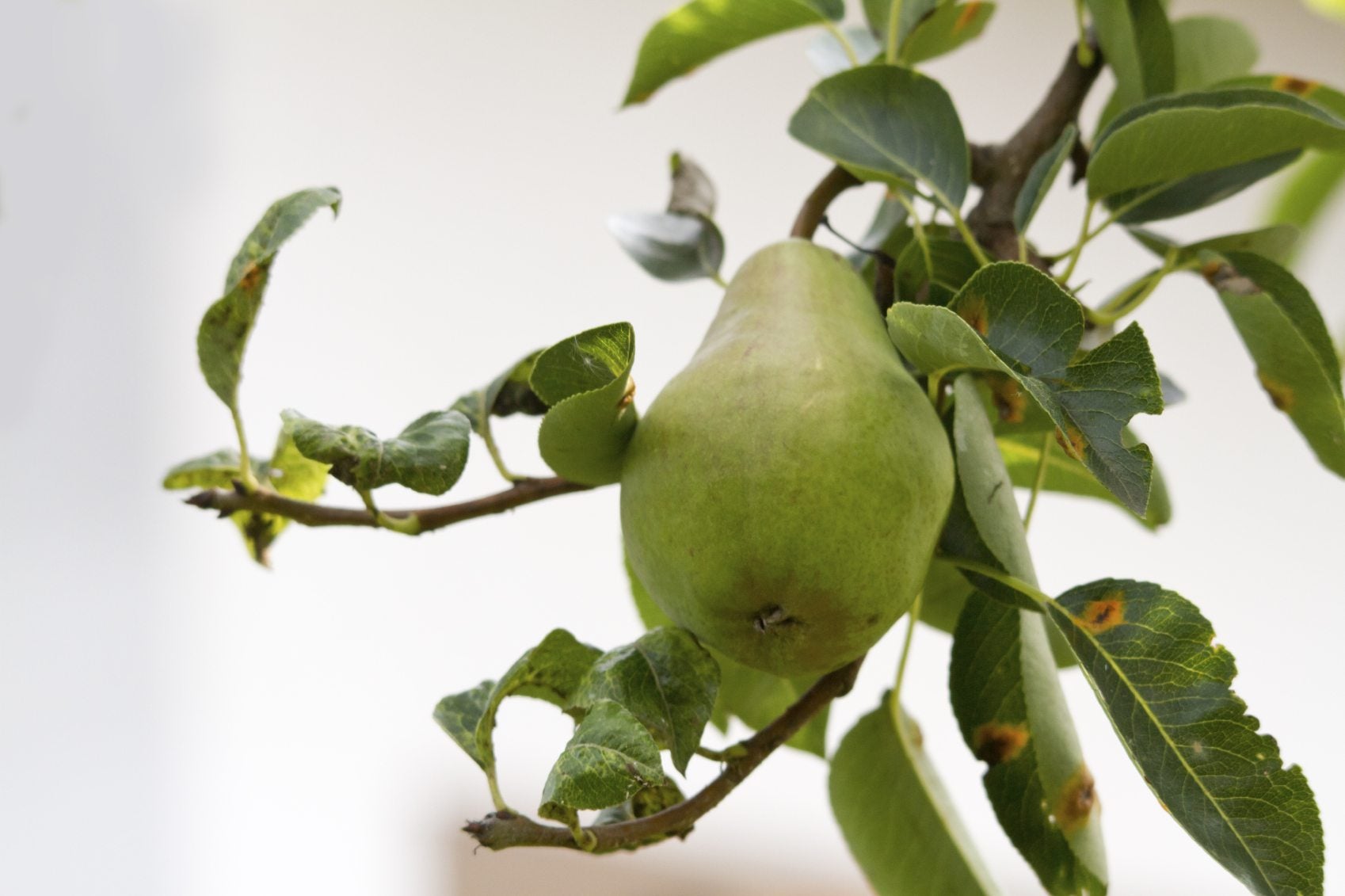Pear Tree Leaf Curl: Learn About Leaf Curl On Pear Trees


Why do pear tree leaves curl? Pear trees are hardy, long-lived fruit trees that usually produce fruit for many years with minimal care. However, they are sometimes susceptible to diseases, pests, and environmental issues that cause leaf curl. Read on for possible reasons for curling pear tree leaves, and tips for pear tree leaf curl treatment.
Why Do Pear Tree Leaves Curl?
Below are some of the most common reasons behind the curling of pear tree leaves and what can be done to alleviate the problem:
Pear Curling Leaf Midge
A native of Europe, the pear curling leaf midge has found its way across most of the United States since it first arrived on the east coast in the 1930's. It is often responsible for curling pear tree leaves in young trees. These small pests pupate in the soil, and then emerges to lay eggs on new, unfurled leaves. When the eggs hatch, the larvae feed on the leaves for a couple of weeks before dropping onto the soil where they wait to start a new generation. Although the pests are small, they can cause serious damage to young trees, evidenced by tightly rolled leaves and red swellings (galls). Eventually, leaves turn black and drop from the tree. To control the pests, remove rolled leaves and dispose of them properly. Severe infestations can be treated by application of organophosphate insecticides. Damage is generally not significant on mature trees.
Pear Tree Leaf Blight
Often known as fire blight, pear tree leaf blight is a highly destructive bacterial disease. Curling pear tree leaves is only one sign. If your tree has fire blight, it may also display brown or black leaves, blooms with a water-soaked appearance, discolored bark, and dead branches. There is no cure for pear tree leaf blight but pruning of infected branches may staunch progress of the disease. Certain chemical antibiotic sprays may be effective when applied before development of symptoms.
Aphids
Aphids are tiny, sap-sucking pests that attack primarily young, tender growth. They are often controlled by aiming a strong stream of water directly at the leaves. Otherwise, insecticidal soap spray is a safe, effective solution that can be repeated as needed.
Caterpillars
A variety of caterpillars enjoy dining on pear tree leaves, often rolling themselves tightly in the protective shelter of the tender leaves. Encourage birds and beneficial insects to visit your garden, as they sometimes eat the pupae and larvae. Look for rolled leaves and other signs of damage and prune as needed. Heavy caterpillar infestations may require chemical control.
Drought
Wilted or curled pear tree leaves may be a sign that your tree isn’t getting enough water. According to many resources, young trees need about a gallon of water every seven to ten days during normal conditions. During hot, dry weather, however, your trees may need double that amount. Established trees rarely require supplemental irrigation, but drought-stressed mature trees benefit from an occasional deep watering.
Gardening tips, videos, info and more delivered right to your inbox!
Sign up for the Gardening Know How newsletter today and receive a free copy of our e-book "How to Grow Delicious Tomatoes".

A Credentialed Garden Writer, Mary H. Dyer was with Gardening Know How in the very beginning, publishing articles as early as 2007.
-
 Moody Blooms For Spring: 8 Types Of Black Flowers To Add Drama To Spring Displays
Moody Blooms For Spring: 8 Types Of Black Flowers To Add Drama To Spring DisplaysFrom midnight burgundies to inky violets, several types of black flowers can enrich and embolden a spring display. Try these brooding bloomers for a moody garden
By Tonya Barnett
-
 Can Snake Plants Live Outside? Everything You Need To Know For Snake Plants Al Fresco
Can Snake Plants Live Outside? Everything You Need To Know For Snake Plants Al FrescoSnake plants can live outside given the right conditions, but be careful that they don't take over! Learn the best way to use snake plants in your landscape.
By Mary Ellen Ellis